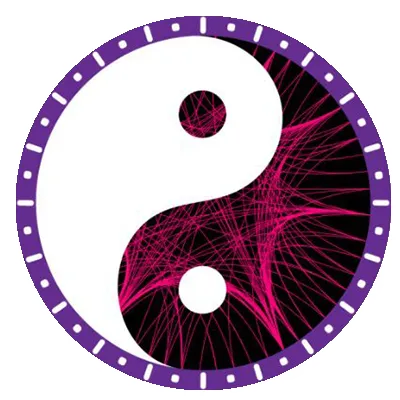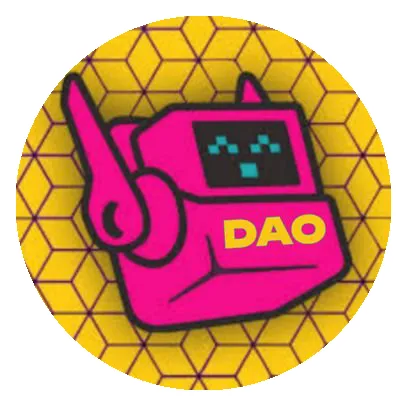Polkadot DAOs
Ce contenu n’est pas encore disponible dans votre langue.
Polkadot DAO communities are vibrant, decentralized groups built around shared goals and values, leveraging blockchain for transparent governance and collaboration. These communities thrive on Polkadot’s interoperable network, enabling members to propose ideas, vote on initiatives, and manage resources collectively. By removing centralized control, Polkadot DAOs empower individuals and organizations to work together seamlessly, driving innovation and fostering inclusive decision-making across diverse sectors.
Polkadot DAOs
Videos
All new DV are DAOs
The announcement of the third cohort of “Decentralized Voices” delegates by the Web3 Foundation marks a triumph of DAOs over individuals, the challenges faced by Spanish-speaking groups in this selection process, and share tips on how to improve your DAO’s branding for greater impact.
Polkadot DAOs & Decentralized Voices (DV): How Delegations Power OpenGov in 2025
This guide explains how Polkadot DAOs and the Decentralized Voices (DV) program work together to improve on-chain decision-making. You’ll learn what DV is (and what changed in Cohort 5), how multi-role delegation works in OpenGov, which tools to use, and a practical, step-by-step workflow to delegate to DV DAOs or other trusted delegates.
ELI5: DAOs, OpenGov, and DV
- DAOs on Polkadot are organized communities (often multisig-backed) that coordinate funding, research, and governance.
- OpenGov is Polkadot’s governance system: everything happens on-chain, across separate tracks (e.g., Treasury vs Root).
- DV (Decentralized Voices) is a Web3 Foundation program that delegates voting power to diverse, doxxed delegates (increasingly DAOs) so decisions reflect more informed perspectives. The program lends a pool of voting power to broaden participation.
What is DV (Decentralized Voices)?
DV lends foundation-held voting weight to carefully selected community delegates to amplify informed participation in OpenGov. The program began in early 2024 and continues to iterate to reduce bottlenecks, diversify viewpoints, and improve transparency of rationales.
Key fact: The DV program publicly states its total delegated pool and a clear application process, including identity requirements and a published governance stance.
Cohort 5 (Sep 2025–Jan 2026): What changed
DV 5 introduced two notable shifts:
- More delegate seats; smaller per-seat clout — reduces the chance any single entity can steer outcomes alone.
- DV-Light (guardians) — a track for subject-matter individuals (including two AI governance agents) who weigh in where they have expertise; the community can retro-fund good work on-chain.
Illustrative delegates in DV 5 (alphabetical, examples):
- DV-DAOs: Le Nexus, Permanence DAO, Polkadot Poland DAO, REEEEEEEEEE DAO, Saxemberg, Trustless Core, PBA Alumni Voting DAO.
- DV-Light / Guardians: Cybergov (AI agents), GoverNoun AI (AI agent), Daniel Olano, Flez, The White Rabbit.
Context: In mid-2025, community discussions explored retuning the program. As of September 2025, Cohort 5 is active with the structure above.
Polkadot OpenGov: Multi-role delegation
OpenGov lets you delegate different tracks to different delegates (e.g., a technical DAO for “Root,” an economic team for “Treasury”). This multi-role (track-level) model is the cornerstone of efficient participation without voting on every single referendum yourself.
Why it matters:
- Granular control: Fine-tune who represents you on each track.
- Better signal: Assign specialists where they credibly add value.
- Flexibility: Change or revoke any track’s delegation at any time.
How DV fits with DAOs on Polkadot
- DV formalizes delegation to vetted entities (increasingly DAOs), encouraging team-based due diligence, published rationales, and recusals on conflicts.
- DAOs are often better than individuals at 24/7 coverage, conflict checks, and institutional memory (tracking previous votes, treasury history, related referenda threads).
- Power users can still override any delegate by voting directly on a referendum (your direct vote supersedes your delegation for that item).
Tools for delegating (feature comparison)
| Tool / App | Track-level (multi-role) | Delegate discovery & profiles | Batch voting | Mobile vote/delegate | Notes |
|---|---|---|---|---|---|
| Polkassembly | Yes | Delegate pages, stats & forum context | Yes | Via connected wallets | Integrated governance hub with delegation dashboard and analytics. |
| Subsquare | Yes | Delegate list & stats; clean referendum views | Basic | Via connected wallets | Lightweight, fast UI; good for browsing and quick actions. |
| Polkadot-JS UI | Yes | Minimal | No | Via wallet/extension | Power-user console; direct access to all parameters. |
| Nova / SubWallet / Talisman | Yes | Limited in-app context | Some | Native mobile (Nova), browser (others) | Smooth mobile delegation and voting flows. |
Tip: For discovery + context, start on Polkassembly or Subsquare; for fine-grained control, confirm on Polkadot-JS UI.
Minn-guide: Delegate to a DV DAO in 10 minutes
Goal: Delegate Treasury-related votes to a DV DAO and Root-track votes to a technical delegate.
-
Choose your delegates
- Shortlist one DV DAO for Treasury and one technical delegate for Root. Skim their stances and past rationales.
-
Open your preferred governance portal
- Use a portal that supports Delegation for Polkadot. Connect your wallet.
-
Delegate by track
- Select Treasury track → choose the DV DAO → set amount and conviction (e.g., 1× for agility; higher × = longer lock + more weight). Confirm.
- Select Root track → choose technical delegate → set amount and conviction. Confirm.
-
(Optional) Use Polkadot-JS UI for advanced toggles
- Navigate to governance → Delegate to fine-tune parameters, or delegate to all tracks first, then edit track-by-track.
-
Monitor & override as needed
- If a specific referendum matters to you, vote directly; your direct vote overrides the delegation on that item. Track votes + rationales in the forum discussion views.
-
Review quarterly
- Revisit track assignments, conviction locks, and whether your delegates continue to publish timely rationales.
Example checklist: Due diligence on a DV DAO
- Track record: Do they publish clear Aye/Nay/Abstain rationales consistently?
- Specialization fit: Does their stated scope match the tracks you’ll delegate? (e.g., Treasury vs Root)
- Conflicts & recusals: Do they disclose conflicts and recuse when relevant?
- Team composition: Is it truly a DAO with coverage across time zones and skills?
- Ops hygiene: Multisig, identity, signing discipline, voting on time?
- Community feedback: Are concerns addressed promptly (e.g., public contact channel; community flags)?
Common pitfalls & pro tips
Pitfalls
- One-delegate-for-everything: You lose the benefits of multi-role specialization.
- Ignoring conviction locks: Higher conviction boosts weight but locks funds longer—plan liquidity.
- Set-and-forget: Delegates change stance or capacity; review quarterly.
- No conflict checks: Look for declared recusals; lack of them is a red flag.
Pro tips
- Mix entities: Combine one DV DAO (Treasury) + one technical delegate (Root) + one regional DAO (People/Community tracks).
- Override on criticals: Use your direct vote for high-impact referenda; it supersedes delegation.
- Follow the meta: DV program updates explain guardrails and evolving norms—skim each cohort’s summary.
FAQs
1) What exactly is delegated in DV? DV delegates receive voting power (DOT/KSM) to participate in OpenGov on behalf of the community, broadening informed participation.
2) What’s different about DV Cohort 5? More seats with smaller per-seat weight, plus a DV-Light track for subject-matter guardians (including two AI agents).
3) Can I delegate different tracks to different entities? Yes. That’s the multi-role delegation model in OpenGov.
4) Does delegation remove my right to vote? No. You can override any delegation by voting directly on that referendum.
5) Where do I see delegates and their stances? Governance portals show delegate lists, profiles, and discussions; DV posts announce cohorts and guardrails.
6) How do I delegate from a wallet? Use supported wallets via governance portals; for advanced options use Polkadot-JS UI.
7) Can DV end or change again? The program design evolves based on public discussions; as of September 2025, Cohort 5 is active.
8) Is this financial advice? No. Governance choices are non-custodial and not investment advice. Do your own research.









